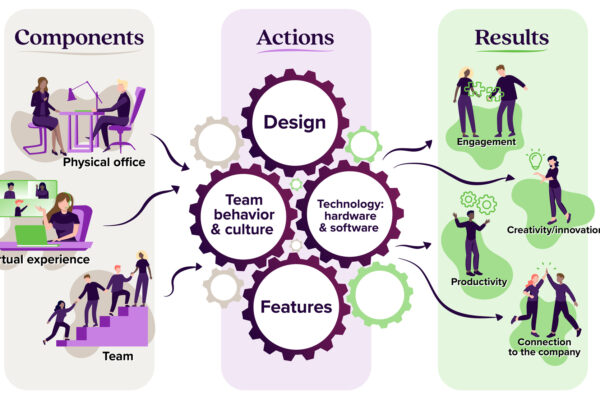
Agile search marketing
As we know, people who find your website on a search engine are highly valuable leads—they’re already interested in whatever you are selling. It makes sense to spend some time figuring out how to get more of this kind of lead.
In one sense, search marketing is the perfect candidate for Agile marketing processes. Agile marketing is all about iterations and testing. We start with the minimum viable product, in this case the smallest marketing element that we can test. We take that element and see how people respond, then either change it or add to it and test again.
Search engine optimization (SEO) is an ever-changing algorithm that isn’t ever fully defined—we would argue that the only way to maintain sanity while optimizing your search marketing is to be agile.
In addition to the rules of search marketing changing frequently, however, there is an added layer of complexity for the testing stage of agile search marketing. Search engines don’t notice your updates immediately, so you might spend your two days optimizing for your target keywords, then not know if your efforts were successful until weeks later.
Making one change and waiting a few weeks for verification, then making another change and waiting again is not particularly agile. We have to be clever/crafty about how we use the agile process for situations like search marketing (long approval chains can be similar).
You need a plan
You definitely need to plan carefully to be efficient in situations with as many variables as search marketing. Sometimes your plan can be simple: if you just have minor SEO updates, you can simply section it out into your small elements and do the work as it fits into the flow of your strategy.
Few search marketing situations are that simple, however. Sometimes the SEO rules aren’t clear. For example, you may have several sets of keywords to choose between, and you don’t know which will perform best. But of course, you still want immediate results.
Careful testing
Even if we take a relatively simple scenario—like choosing between two sets of keywords for your website messaging—there are multiple variables that you must consider.
First, there is a fine line between optimizing a webpage for keywords, and keyword stuffing. The former will help you rank higher on searches, the latter will send you to the bottom of the search results.
Then there is the question of which message to choose; which keywords will lead to the best search results, and therefore to the most website traffic.
Finally, there is the part where you discover which keywords lead to more conversions, which might not be the same ones that lead to more web traffic.
Example
Imagine that your company sells a medical device that warns people when they are about to experience a migraine, so that they can take medication before their symptoms begin*.
Unfortunately, in spite of an awesome product that customers rave about, your website gets very little traffic—fewer than 20 visitors per day. Currently, the website discusses your “migraine warning device” and how it can improve quality of life for migraine-sufferers.
From your market research testing, your team has identified two potential messages that resonated with your customers: “living with migraines” and “eradicating migraine pain.”
Although it is sometimes possible to optimize a webpage for multiple sets of keywords, for this example let’s assume you want to keep your messaging simple and choose only one.
*If anyone knows of such a device, please let the author know. She would like one.
The Testing
If you are not already familiar with the agile process, check out our first blog in this series.
The greatest challenge with agile search marketing is in testing, which is time-consuming at best, and torturous if not carefully planned.
As in most of marketing, you have dozens of options for how to conduct a test. Perhaps the simplest in this situation is to not optimize the homepage for either message. Instead, create two landing pages, one for each message. After some time, see which landing page ranks higher in search results, and which landing page gets more visitors clicking through to the rest of the website.
Then, create two versions of each landing page—one using just a small number of keywords, the other using more. Post the two versions of each page as an A/B test to help nail down how many keywords is best.
Using a method like this one, you can conduct multiple tests at the same time, making the best use of the relatively long lead time you’ll need to get results.


